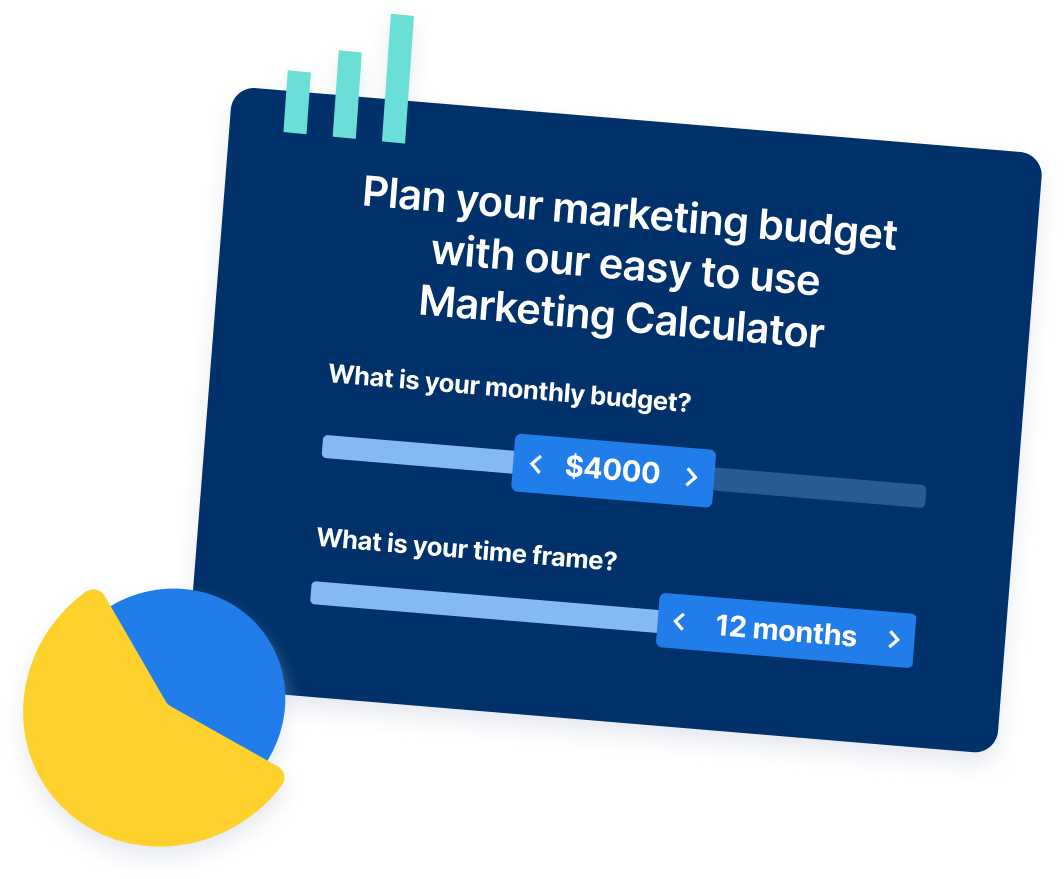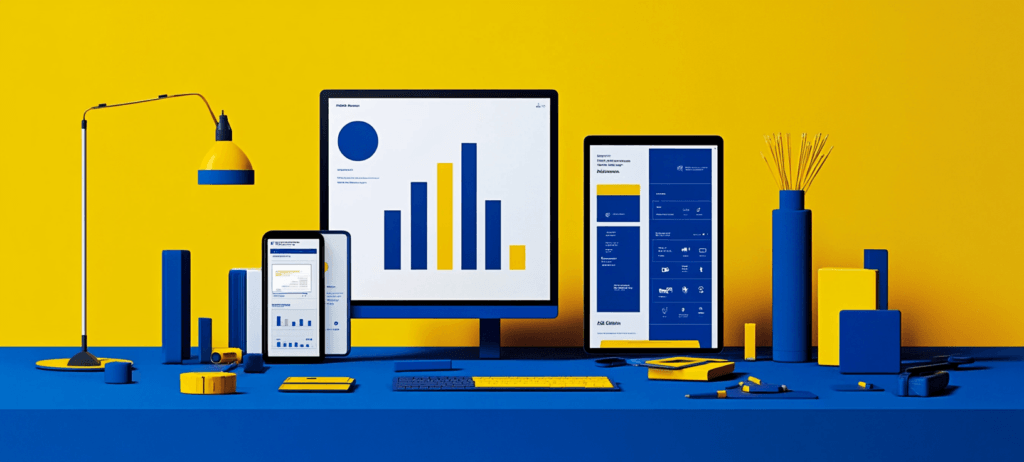-
 Published: May 2, 2025
Published: May 2, 2025
-
 6 min. read
6 min. read
-
Summarize in ChatGPT
-
 Kayla Johansen
Kayla Johansen PPC Analyst
PPC Analyst
- Kayla Johansen is a PPC Analyst at WebFX, where she manages the advertising campaigns for WebFX.com and Nutshell across various channels, including search, video, display, social media, audio, and connected TV. Since joining the WebFX team, she’s driven millions in revenue and consistently increased sales from PPC year over year. With a B.S. in Marketing and certifications in Google Ads and Google Analytics, she’s dedicated to generating qualified leads. When not driving revenue, she enjoys reading, creative writing, playing cozy video games, and hanging out with her dogs.
- Is Google currently testing ads in AI chatbots? Yes, Google has partnered with AI chatbots iASK and Liner to test ad placements in their conversational search platforms, and if successful, will likely expand to additional AI search engines beyond these initial partners.
- What benefits do AI chatbot ads offer advertisers? Advertisers can tap into the rapidly growing AI search trend (expected to reach 90 million users by 2027), scale their reach through expanded placements, diversify their channels, and potentially improve ad relevancy by matching user intent in conversational contexts.
- What concerns exist about ads in AI chatbots? Advertisers worry about placement quality based on historical issues with Google’s third-party networks, and there’s concern that integrating ads could frustrate users and negatively impact their experience with AI chatbots.
- What reporting transparency questions remain unanswered? It’s unclear whether these placements will be part of Google’s search partner network, how transparent reporting will be for AI-powered platforms, whether advertisers will get search term insights, and if negative concepts can be used to prevent certain ad triggers.
- How can advertisers prepare for AI chatbot advertising? Advertisers should build more conversational ad messaging, stay updated on Google’s announcements, analyze user insights to understand how audiences discuss products, and ensure their Google Ads accounts use enhanced conversions and proper targeting strategies.
tl;dr
Google is reportedly showing ads in AI chatbots like iASK and Liner through its AdSense network. This update could open up exciting opportunities for advertisers to scale their reach and diversify their channels amid the ongoing AI search shakeup.
The news dropped this week that Google has partnered with AI chatbots iASK and Liner to test ad placements in their conversational search platforms.
We’ve already seen Google testing ads in AI search overviews, plus news that ChatGPT will likely offer advertising by next year. As AI takes the search landscape by storm, it’s no surprise that Google would want to extend its reach into third-party AI-powered search engines.
So, let’s answer a few of the questions you’re likely wondering:
- Is Google currently showing ads in AI chatbots?
- What does this mean for advertisers?
- Is there anything advertisers need to do now to prepare?
Let’s dive in!
Is Google already showing ads in AI chatbots?
According to the latest news, yes, Google has already started testing ads in select AI chatbots. It’s reasonable to assume that, if these tests go well, they will likely try to expand their AI search placements beyond the initial testing partners.
What do Google’s AI chatbot ads mean for advertisers?
Google’s addition of third-party AI search platforms to its AdSense network opens up exciting advertising opportunities for businesses.
Before we dive into the details, take a look at our guide to AI advertising for a bigger picture of how brands can put artificial intelligence to work in their campaigns. Now, let’s check out some of the benefits and potential areas of caution we anticipate:
Potential benefits
Ability to capitalize on the growing AI search trend
Thirteen million people used AI for search in 2023, a number that’s expected to reach a whopping 90 million by 2027.
Google adding third-party AI search platforms into their AdSense network means you can tap into this growing trend without needing to adopt an all-new ad platform.
Scaling potential
The additional conversational search placements also empower you to scale your reach. Existing campaigns could benefit from these expanded placements, allowing you to lean even more into what’s already working well.
Channel diversification
AI-powered search is taking the PPC landscape by storm. While traditional search ads likely aren’t going anywhere anytime soon, adopting an omnichannel approach to search advertising could prove a strategic move for many advertisers.
And since these tools affect organic performance too, it’s worth exploring how AI chatbots and SEO intersect to reshape overall search visibility.
Take this stat as an example: Estimates suggest that organic web traffic has decreased by 15%-25% because of AI-powered search. While that decrease refers to organic search, not paid, I would expect a similar trend to hit the traditional PPC landscape, too.
Potential for improved relevancy
Placing ads within the context of a conversational search, if done strategically, can create opportunities to better match the user’s intent and create a more relevant ad experience. Increased relevancy can lead to a better overall experience for the user.
Areas of caution
While the added placements present exciting opportunities, I’d be remiss not to highlight a couple of areas of concern as well:
Placement quality
Advertisers have historically called out low-quality placements on Google’s third-party networks. While I’m optimistic about the new AI search placements, I wouldn’t write off all concerns about quality. However, I am hopeful Google will strike the right balance between scale and quality.
User experience
Anytime a company integrates ads into its platform, they run the risk of frustrating users. To maintain a positive user experience, the chatbots will need to ensure appropriate placements, targeting, and formatting.
Questions we still have
The introduction of Google Ads into third-party AI chatbots is developing as we speak, and as a result, I’m curious to see how a few key areas for advertisers will shape up:
- How are ads made eligible for these placements? Will these AI chatbots be included in Google’s search partner network? If Google will allow ads to show in AI-powered searches via the search partner network, will this shift support an even bigger push toward broad match keywords?
- How transparent will Google’s reporting be for these AI-powered platforms? Google is slowly improving transparency for Performance Max campaigns–will they also add an “AI search partner” channel to their reporting or will it be up to advertisers to analyze individual placements? For context on how the industry continues to evolve, it’s worth keeping an eye on the latest AdTech trends.
- Will we get any insights into the searches that triggered our ads? With traditional search, we have the search terms report, but providing the same level of data with conversational AI search could prove difficult, especially when considering user privacy and the variation in the searches.
- What kinds of queries will trigger ads? Would it just be shopping and ecommerce related queries or any query? If any query, would it include any intent or only certain kinds of intent?
- Will we have the ability to add “negative” concepts to prevent ads from appearing for certain queries?
- How will users respond to ads in AI? Will it be convenient, or will it cause a decline in the trust users have in the AI result?
What can you do now to prepare for Google’s AI chatbot ads?
If you haven’t yet considered the impact of AI-powered search on your PPC strategies, now’s the time to start. My top recommendations to ensure you’re ready for this change are:
- Build out more conversational ad messaging: With these placements, your ads have an opportunity to show up in conversational AI-powered searches. Try building out more messaging approaches that will align with this conversational context. To understand what works well, check out your organic AI search rankings using a tool like our OmniSEO® dashboard.
- Stay updated: Keep an eye on the latest updates from Google, as well as any in-platform reporting you typically track to spot if and when any potential AI chatbot placements begin appearing.
- Dive into your user insights: As search becomes more contextual and conversational, understanding how your audience thinks will become increasingly vital to creating ad copy that resonates. Analyze sales conversations, survey responses, and reviews to understand how users talk about your products and services and what problems you’re helping them solve.
- Ensure your Google Ads account is set up for success: Now’s also as good a time as any to do some “spring cleaning” on your Google Ads conversion actions and targeting. Check that you’re using enhanced conversions, offline conversions if applicable, and conversion values where necessary. You might also check that your customer lists are uploaded and up-to-date and that your campaigns are leveraging them appropriately, such as choosing to bid only for new customers.
This latest news from Google only cements how rapidly the paid search landscape is changing. But by monitoring the latest news and always being willing to experiment, you can keep your company ahead of the curve.
-
 Kayla Johansen is a PPC Analyst at WebFX, where she manages the advertising campaigns for WebFX.com and Nutshell across various channels, including search, video, display, social media, audio, and connected TV. Since joining the WebFX team, she’s driven millions in revenue and consistently increased sales from PPC year over year. With a B.S. in Marketing and certifications in Google Ads and Google Analytics, she’s dedicated to generating qualified leads. When not driving revenue, she enjoys reading, creative writing, playing cozy video games, and hanging out with her dogs.
Kayla Johansen is a PPC Analyst at WebFX, where she manages the advertising campaigns for WebFX.com and Nutshell across various channels, including search, video, display, social media, audio, and connected TV. Since joining the WebFX team, she’s driven millions in revenue and consistently increased sales from PPC year over year. With a B.S. in Marketing and certifications in Google Ads and Google Analytics, she’s dedicated to generating qualified leads. When not driving revenue, she enjoys reading, creative writing, playing cozy video games, and hanging out with her dogs. -

WebFX is a full-service marketing agency with 1,100+ client reviews and a 4.9-star rating on Clutch! Find out how our expert team and revenue-accelerating tech can drive results for you! Learn more
Try our free Marketing Calculator
Craft a tailored online marketing strategy! Utilize our free Internet marketing calculator for a custom plan based on your location, reach, timeframe, and budget.
Plan Your Marketing Budget

See AI Marketing in Action
Explore how WebFX helped a regional brand get discovered in AI search experiences — proving what’s possible with today’s AI-driven marketing!

Proven Marketing Strategies
Try our free Marketing Calculator
Craft a tailored online marketing strategy! Utilize our free Internet marketing calculator for a custom plan based on your location, reach, timeframe, and budget.
Plan Your Marketing Budget




